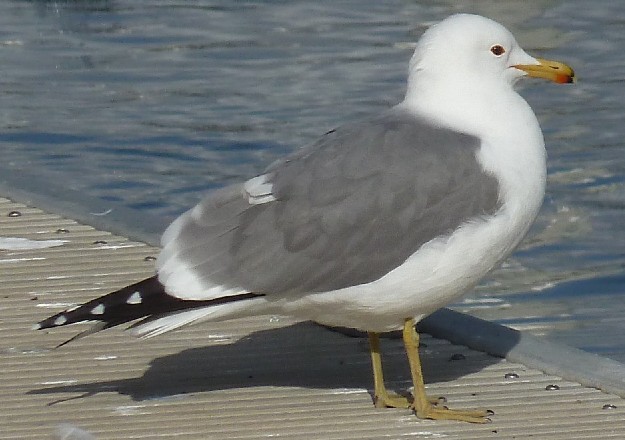
back to the Gull ID MainPage


|
February 4, 2013. Davis, Calfornia. Photo by Steve Hampton. The red gape line becomes obvious in most birds as the winter progresses. |



These flight shot shows the primary pattern as well as the gray undersides of the secondaries, which allows Californias to be distinguished from other western species (which are either darker or lighter here) at a great height. February 14, 2012. Davis, Calfornia. March 23, 2011. Clearlake, Calfornia. |

|

|
A basic and alternate adult side by side, which you can see in March. Note how bright yellow the legs and bill have become in the breeding-plumaged bird. |

|
Two breeding-plumaged birds with a large male Herring Gull (still with some winter streaking) in the background.
It's not apparent in this photo, but most lighting conditions show California Gull to be obviously darker-mantled than
Herring and Ring-billed Gulls.
Another typical adult, already in breeding plumage in March. 
|



|
A typical winter-plumaged bird. |
